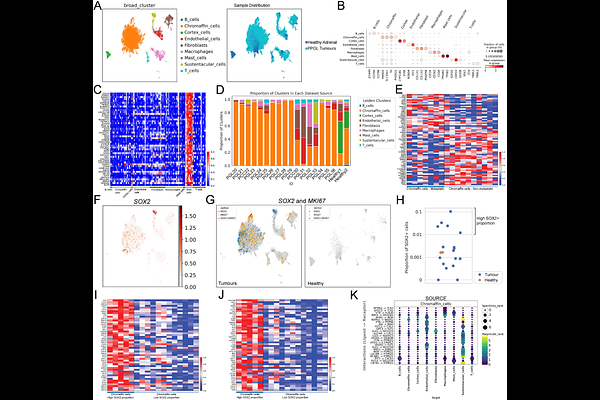Phaeochromocytomas and paragangliomas harbour tumour-initiating SOX2+ stem cells

Phaeochromocytomas and paragangliomas harbour tumour-initiating SOX2+ stem cells
Kemkem, Y.; Quinn, M.; Kover, B.; Santambrogio, A.; Kaufman-Cook, J.; Sherwin, O.; Scriba, L. D.; Brempou, D.; Segoviano, M. V.; Cameron, D.; Berger, I.; Ng, W.; Nonaka, D.; Theodoropoulou, M.; Pamporaki, C.; Carroll, P. V.; Izatt, L.; Chapple, J. P.; Bornstein, S. R.; Bechmann, N.; Steenblock, C.; Oakey, R. J.; Andoniadou, C. L.
AbstractPhaeochromocytomas (PCCs) and paragangliomas (PGLs), are rare neuroendocrine tumours that arise in the neural crest (NC)-derived adrenal medulla and the paraganglia, respectively. Approximately 10%-15% of patients with PCCs and 35%-40% with PGLs go on to develop metastatic disease, leading to a reported median overall survival of 7 years. The development of prognostic markers and subsequent personal therapeutic strategies are hindered by a lack of understanding of tumourigenesis. In other organs, cells with stem-like properties are at the root of tumour initiation and maintenance, due to their ability to self-renew and give rise to differentiated cells. We have recently shown that, in the human adrenal, a subset of sustentacular cells, endowed with a support role, are in fact SOX2+ postnatal adrenomedullary stem cells, that are specified along the neural crest migratory route. In this study, we intended to determine if SOX2+ cells in PCCs and PGLs can behave as tumour-initiating stem cells. Using expression and transcriptomic studies, we demonstrate the presence of SOX2/SOX2-expressing cells across a broad range of PCCs and PGLs, irrespective of tumour aggressiveness, location, and causative mutation. In silico analyses reveal the co-expression of SOX2 and chromaffin cell markers in the tumour, and the active proliferation of these double-positive cells. Isolation of these cells in vitro in stem cell-promoting media, and their xenotransplantation on chicken chorioallantoic membranes, demonstrates that they have the potential to expand and metastasise in ovo, supporting their potential as tumour-initiating cells.